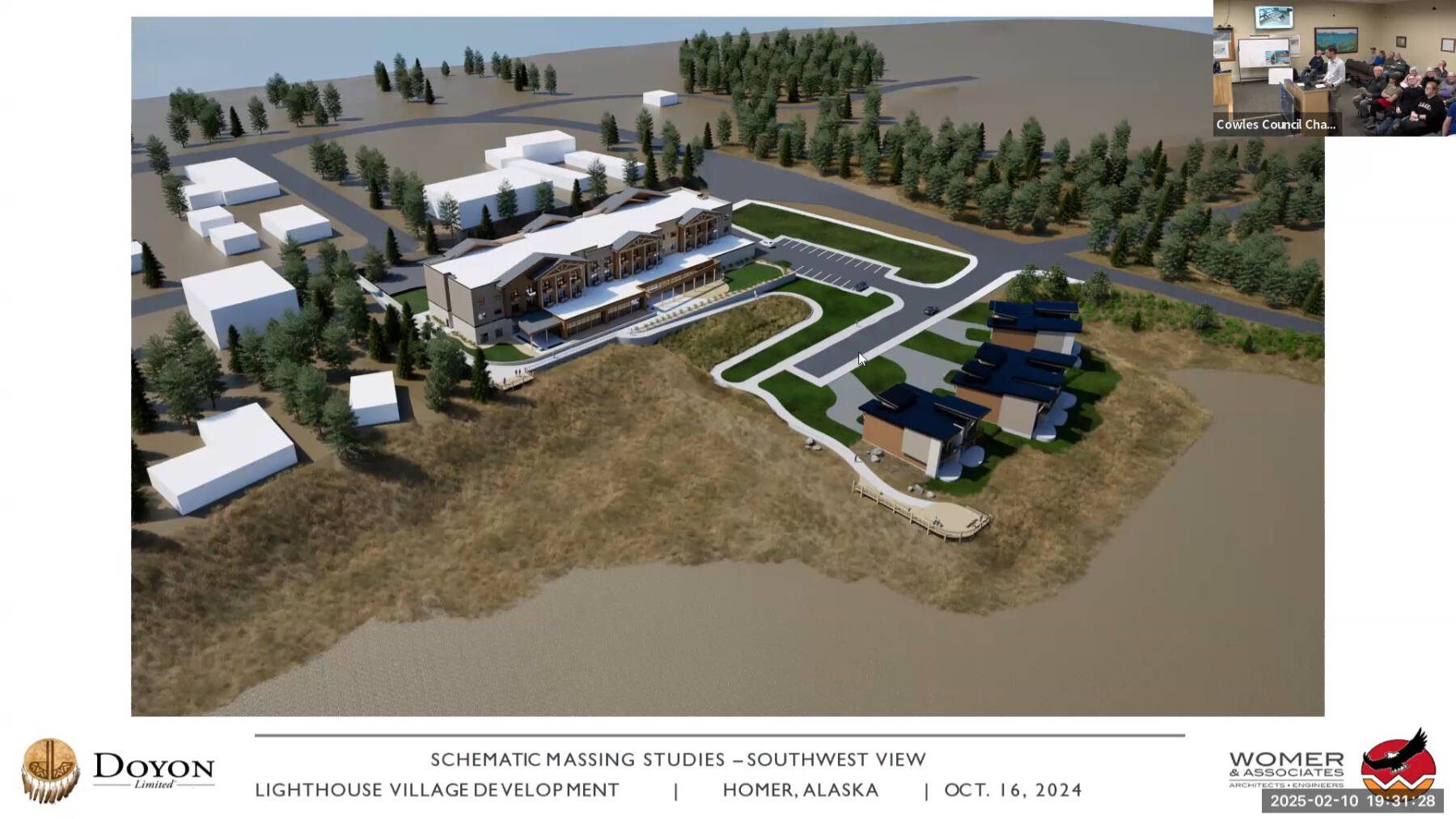The questions of the Lighthouse Village rezone and B Street right of way vacation have finally been put to rest.
The Homer City Council last Monday approved Doyon, Limited’s requests to rezone their lot at 1491 Bay Avenue from rural residential to General Commercial 1 and to vacate a portion of the B Street right of way. These decisions further validate Doyon’s conditional use permit application for their proposed Lighthouse Village development, which was approved by the Homer Planning Commission in November.
The Kenai Peninsula Borough Planning Commission unanimously approved the B Street ROW vacation on Jan. 13. The city council during their Feb. 10 meeting had the option to either veto or voice nonobjection to the commission’s decision; a Jan. 27 memorandum to the council recommended that the council consent to the vacation. On Feb. 10, the council approved the recommendations listed in the memo.
Considering the amount of deliberation from both the Homer Planning Commission and city council on various aspects of the proposed development since Doyon first submitted their CUP application in 2023, the council’s decisions on Monday, when it came down to it, were made fairly swiftly. Council member Donna Aderhold, serving as mayor pro tem in Mayor Rachel Lord’s absence, reminded the council that their focus needed to remain on the two items before them, rather than the whole concept of the development.
“We can’t redo what the planning commission did,” she said. “That’s not for us to do.”
A separate memorandum to the council, dated Jan. 24, from City Planner Ryan Foster and City Attorney Michael Gatti noted that the council also did not have the authority to place contingencies on the plat for Doyon’s property, as platting authority lies with the borough.
Council member Shelly Erickson said during council discussion of the right of way vacation, which has received mixed feedback from the public including comments to either deny or postpone the vacation, that the CUP process for Doyon’s application has followed the letter of the law.
“When you follow the letter of the law and you go through a CUP and all the different things they have to meet, you don’t really have a lot of other choices, because it’s not about your feelings,” she said. “It’s about the law, and they have met the letter of the law with the CUP and what they’ve shown us … (with) the plans.”
Both the rezone and the ROW vacation were passed without opposition.
More than a dozen members of the public spoke on the rezone and ROW vacation during the public comment period at the beginning of Monday’s regular meeting. As with previous public hearings before both the council and the planning commission, opinions were mixed, with some expressing support of Doyon’s proposed development and others urging the council to deny the rezone and the ROW vacation.
Penelope Haas, speaking on behalf of the Kachemak Bay Conservation Society, expressed continued concern for the development’s size in terms of both footprint and height, the potential impact on traffic on Ocean Drive and the intersection of Homer Spit Road and Kachemak Drive, and that the development will sit “right up in front of one of the most valuable wildlife habitats that Homer has.”
“This kind of density … doesn’t belong in this location. It belongs in the city center, and we do need to respect the value and integrity of our intact ecosystems. It’s a cornerstone of Homer’s economy and our culture,” she said.
Karin Marks, chair of the Economic Development Advisory Commission, spoke to the benefits of vacating the B Street right of way and having Doyon install and maintain an ADA-compliant pedestrian pathway in place of the current trail there.
“I am also very concerned that people do not consider the amount of money for not only creating the ADA assessment … but also maintaining it,” she said. “(The trail) would still be available for certain people to go down there if this vacation and change was not done, but I think that’s limiting. The city can’t provide ADA assessment or work in that area, and we want all kinds of people to see those points that we have been describing.”
Mike Stark, who sits on Homer’s planning commission, also noted that Doyon has more resources than the City of Homer to implement amenities like the proposed pathway or to conduct contamination cleanup of the Lighthouse Village site.
A few residents of the Bay Avenue residential neighborhood adjoining Lighthouse Village said that they wanted Doyon to ensure permanent, legally protected public access to their planned pedestrian pathway, which connects to B Street and the intersection of Kachemak Drive and Homer Spit Road, and their two planned wildlife viewing platforms.
Zach Dunlap, Doyon operations manager, said during his presentation to the council later in the meeting that approval of the rezone and ROW vacation would allow for a 30-foot vegetative buffer and the 20-foot “enhanced” pedestrian access between the Bay Avenue neighborhood and the planned Lighthouse Village hotel “in perpetuity.”
Eventually, Doyon also plans to bring the plat before the KPB Planning Commission for replatting, “enabling the subdivision of the property from three lots into two and binding legal public access for the pedestrian easement,” he said.
Find the full recording of the Homer City Council’s Feb. 10 meeting online at www.cityofhomer-ak.gov/citycouncil/city-council-regular-meeting-337.


